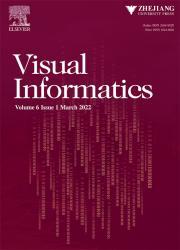Adaptive neighbor constrained deviation sparse variant fuzzy c-means clustering for brain MRI of AD subject
Abstract
Progression of Alzheimer’s disease (AD) bears close proximity with the tissue loss in the medial temporal lobe (MTL) and enlargement of lateral ventricle (LV). The early stage of AD, mild cognitive impairment (MCI), can be traced by diagnosing brain MRI scans with advanced fuzzy c-means clustering algorithm that helps to take an appropriate intervention. In this paper, firstly the sparsity is initiated in clustering method that too rician noise is also incorporated for brain MR scans of AD subject. Secondly, a novel neighbor pixel constrained fuzzy c-means clustering algorithm is designed where topoloty-based selection of parsimonious neighbor pixels is automated. The adaptability in choice of neighbor pixel class outliers more justified object edge boundary which outperforms a dynamic cluster output. The proposed adaptive neighbor constrained deviation sparse variant fuzzy c-means clustering (AN_DsFCM) can withhold imposed sparsity and withstands rician noise at imposed sparse environment. This novel algorithm is applied for MRI of AD subjects and normative data is acquired to analyse clustering accuracy. The data processing pipeline of theoretically plausible proposition is elaborated in detail. The experimental results are compared with state-of-the-art fuzzy clustering methods for test MRI scans. Visual evaluation and statistical measures are studied to meet both image processing and clinical neurophysiology standards. Overall the performance of proposed AN_DsFCM is significantly better than other methods.

 求助内容:
求助内容: 应助结果提醒方式:
应助结果提醒方式:


